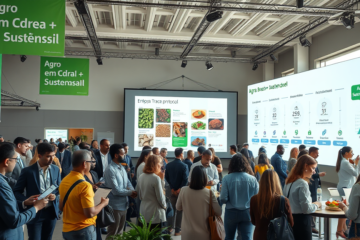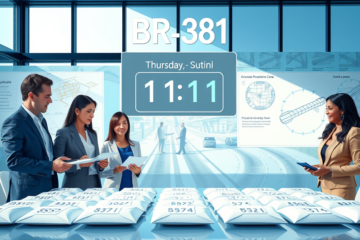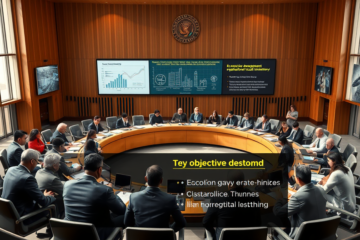Rising Coffee Prices and Their Impact
Coffee prices have seen a significant increase in the United States, with an increase of almost 21% in August compared to the previous year.
This phenomenon is driven by tariffs on imports from Brazil, Vietnam and Colombia, which directly affect the market.
In this article, we will explore the implications of this price increase, how it affects consumers and small business owners in the sector, and the possible solutions being discussed to mitigate this crisis in the coffee market.
Overview of Retail Price Increases
Retail coffee prices in the United States have increased almost 21% in August compared to the previous year, reflecting one of the largest increases recorded since the 1990s. This significant growth is a direct consequence of import tariffs taxes on products from three of the world's leading coffee exporters: Brazil, Vietnam It is Colombia.
These tariffs have significantly impacted the cost of coffee for the American consumer, as roasters are absorbing some of these increases, but the pass-through has become inevitable.
Market data confirms The impact is felt across different regions, with Washington, DC, standing out for the rise in the average price of a hot coffee. As the cost of coffee rises, consumers may opt for more economical solutions, such as alternative brands or home brewing.
This tariff pressure is sparking discussions about the possibility of exempting coffee from these taxes, attempting to ease the burden on small businesses and consumers.
Import Tariffs and Effect on Costs
Import tariffs on coffee, especially from Brazil, Vietnam and Colombia, have caused a significant increase in costs.
With a 50% tariff on Brazilian coffee, roasters and retailers in the United States face financial challenges, resulting in higher prices for the end consumer.
This situation has had a direct impact on the viability of small coffee shops and on consumers' choice between brands and preparation methods.
How Tariffs and Cost Transfer Work
Import tariffs on coffee in the United States are calculated based on the customs value of the product, including costs such as transportation and insurance.
When the coffee arrives at customs, these costs are added together as a percentage to determine the final tariff.
This fee often represents a significant amount, such as the fee for 50% about the Brazilian coffee mentioned above.
Once applied, tariffs are passed along the supply chain through so-called cost transfer, which importers and roasters initially absorb.
However, the impact inevitably trickles down to end consumers, driving up retail coffee prices, as seen in places like Washington, where cold brew prices reach as high as US$1.45. This dynamic fuels both legislative debates, such as bipartisan bills to exempt coffee from tariffs, and the search for more economical alternatives, leading consumers to opt for cheaper brands or prepare coffee at home.
For more information on the impact of these tariffs on the market, see the impact of the tariff hike.
Average Coffee Prices in Washington
In August, coffee prices in Washington showed a notable increase due to import tariffs, directly impacting local consumers.
The following table shows the average prices of different types of coffee:
| Type of Coffee | Average Price (US$$) |
|---|---|
| Regular coffee | 4,21 |
| Cold brew | 5,35 |
The prices highlighted in the table reflect such as tariffs applied to coffee imported from Brazil, Vietnam and Colombia are influencing the final cost to consumers in Washington.
On sites like reported by CNN Brasil, the tariffs are partially absorbed by the roasters, but even so, the impact on the end consumer is clear and significant.
This situation leads many to reconsider their consumption options, such as choosing cheaper brands or preparing coffee at home.
Effects on Roasters and Consumers
Roasters in the United States face a growing challenge due to tariffs on coffee imports from Brazil, Vietnam and Colombia.
To minimize price increases that inevitably reach the end consumer, many roasting companies are absorbing part of the tariffs.
However, this containment measure has its limits, since additional costs are significant.
Recent statistics show that the price of coffee increased by 21% in just one year, highlighting the direct impact of tariffs on shelves.
Small retailers, in particular, have felt the pressure as they rely more on already tight profit margins to remain competitive.
In response, many consumers opt for more economical brands or start preparing coffee at home, looking for ways to reduce expenses.
This scenario creates a cycle where the economic uncertainty generates concern for both the market and consumers themselves, illustrating how interconnected and vulnerable the coffee supply chain is to tariff policies.
Bipartisan Bills for Tariff Exemptions
In the United States, discussions are growing about important bipartisan projects aimed at exempting tariffs on imported coffee, especially from Brazil, Vietnam and Colombia.
These tariffs, imposed to protect local industries, resulted in a significant impact on the price of coffee for American consumers.
For example, a report from CNN Brasil highlights that, in some cases, the increase reached 21% compared to the same period of the previous year.
The expectation is that, with the approval of these projects, the relief in the tariff burden can benefit not only consumers, who already face high prices, but also small businesses in the coffee shop and roasting sector, which are currently struggling to maintain economic viability in the face of rising costs.
Exemption from tariffs is presented as a key strategy to stabilize the market and offer products at more affordable prices.
Changes in Consumer Behavior
American consumers face a scenario where the significant increase in coffee prices has generated notable changes in their daily behaviors.
With import tariffs high, many are opting for alternatives that ease the impact on their already strained budgets.
The two main adjustments made by these consumers include
- Buying more affordable brands
- Preparing coffee at home
These changes reflect a growing trend that not only changes habits, but also presents psychological impacts considerable.
The need to adjust the budget to ensure continued coffee consumption causes a feeling of loss and adaptation.
People may feel they must give up their established brand preferences for new, economically viable options.
That change of habit awakens feelings of nostalgia, as the morning ritual transforms, challenging comfort zones.
The debate over tariffs leads us to recognize the deep cultural and emotional connections with coffee, as illustrated in the news about the widespread impact of price increases. Rising coffee prices are a cause for concern in the US.
Challenges of Small Coffee Businesses
Small coffee shop owners face a challenging scenario due to high costs driven by import tariffs on coffee from Brazil, Vietnam and Colombia.
With prices increasing by up to 21%, many coffee shops are looking for alternatives to maintain business viability.
“We’re looking for alternative suppliers so we don’t have to pass everything on to the customer,” says a local coffee shop owner.
This search for new suppliers becomes essential to maintain customer loyalty, as competitors such as Mexico and Honduras increase their exports to the US.
The question of diversification of sources of coffee beans has become crucial.
The impact on shelves is evident, and consumers are beginning to explore more affordable brands or prepare their drinks at home.
This dynamic forces property owners to be creative in managing resources, maintaining a balance between quality and price, while awaiting possible changes in pricing policies discussed in bipartisan proposals.
Uncertainties about Business Viability
The climate of uncertainties among US coffee shop owners is growing as tariffs on coffee imports, especially from Brazil, impact operating costs and threaten business viability.
With tariffs reaching 50% on Brazilian products, profit margins are under pressure while price volatility continues to cause concerns increasing.
Small business owners are looking for alternatives, such as supplier diversification and ongoing supply chain analysis, but the possibility of new tariffs adds another layer of complexity.
Bipartisan discussions, as reported by reports from the Forbes website, on the exemption of coffee from tariffs offer a ray of hope, but until an agreement is reached, entrepreneurs face a challenging financial environment.
Strategies to maintain the sustainability of coffee shops are essentially relevant to ensure survival in such a competitive market.
Coffee prices and its fluctuations have had a considerable impact on both consumers and small businesses.
Market dynamics and tariff discussions are crucial to the sustainability of the sector.



0 Comments